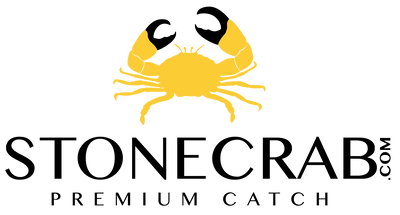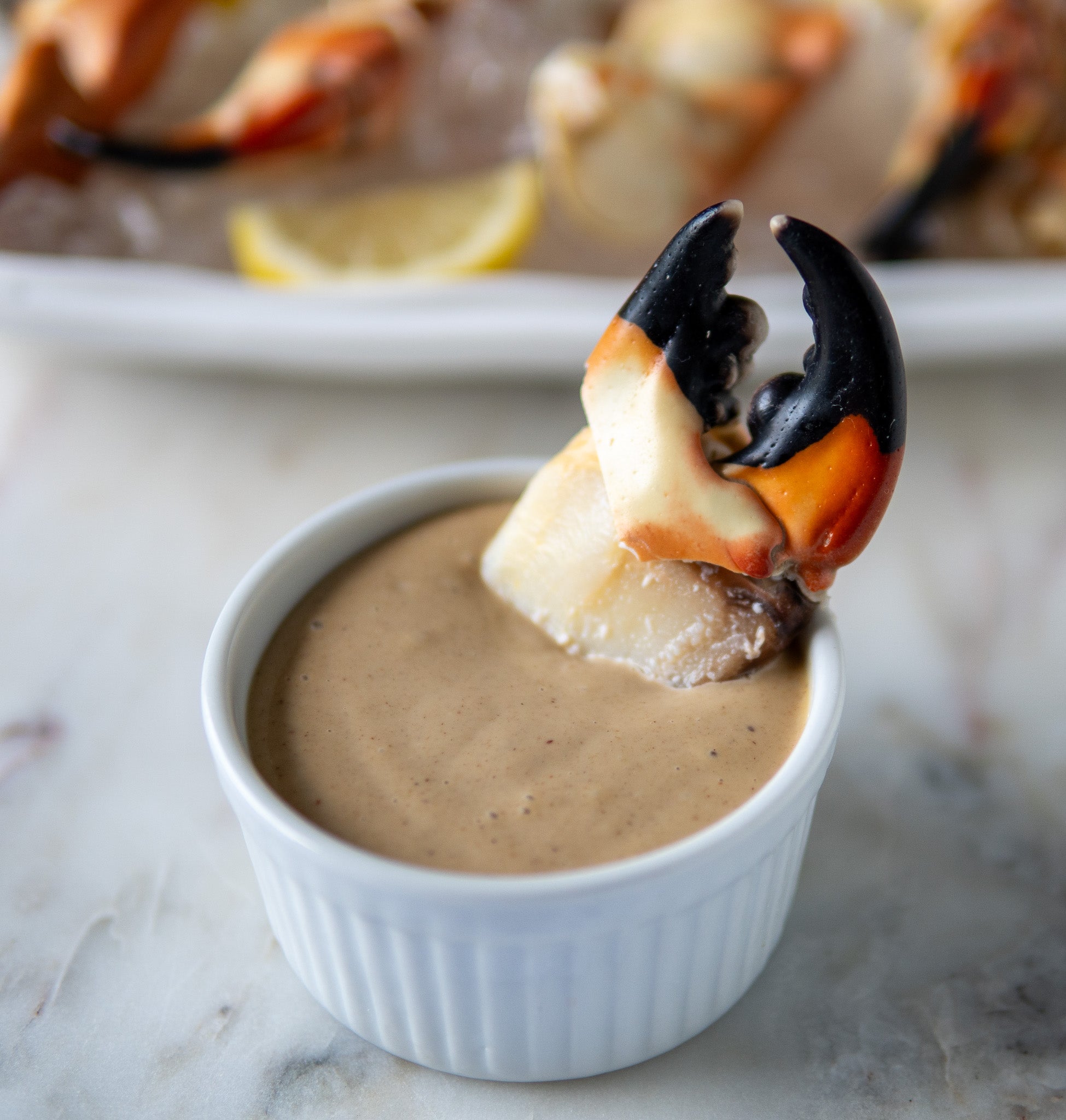Stone Crab Price Trends: What Affects The Cost Per Pound Over Season vs Off-Season
Stone crabs are one of the most sought-after delicacies in Florida and beyond. Known for their sweet, delicate flavor and sustainable harvesting practices, stone crabs are considered a luxury seafood item. But if you’ve ever shopped for them, you know their price can vary significantly depending on the time of year, supply conditions, and market factors. Understanding stone crab price per lb and the forces driving these changes not only helps seafood lovers make informed purchasing decisions but also provides insights into the economics of one of Florida’s most iconic seafood industries.
In this article, we’ll dive deep into stone crab cost trends, explore why this delicacy is often expensive, and break down the seasonal variations that affect its market value.
Why Stone Crab Is Considered Expensive
Stone crab claws are priced higher than many other types of seafood. Several factors explain why stone crab is expensive:
-
Sustainable Harvesting Practices
Once the fishermen remove legal size claws, the crab is returned to the ocean, ensuring the species survives and regenerates. This limits how much can be harvested.
-
Limited Harvest Season
Stone crab season in Florida typically runs from mid-October through May 1. Outside of these months, fresh claws are unavailable, making them a seasonal luxury. Restaurants, seafood markets, and direct consumers compete for limited stock, especially early in the season when excitement peaks. -
Labor-Intensive Process
Harvesting stone crabs requires experienced fishermen, specialized traps, and careful handling to avoid harming the crabs. -
Size Matters
Jumbo claws, which are rarer, command significantly higher prices per pound than medium or large claws.
Stone Crab Price Per Pound: In-Season vs Off-Season
In-Season Pricing (October–May)
-
Medium claws often start at $30–$45 per lb.
-
Large claws may range between $45–$65 per lb.
-
Jumbo claws, often cost $64-$74 per lb. Usually 3-4 Claws per pound.
- Colossals and Mega Collossal due to their rarity and size usually exceed $68++ per lb.
During the season, prices fluctuate based on availability, fishing conditions, and demand spikes (e.g., holidays like Christmas and New Year’s).
Off-Season Pricing (June-October)
Since fresh claws aren’t available, most markets offer frozen stone crabs. Frozen claws typically sell for slightly less, but the taste and texture are often dependent upon the process of freezing and thawing. If done properly, there should be minimum flavor loss.
-
Off-season prices may be 10–20% lower, but availability is limited, and usually only the larger suppliers have facilities large enough to store off-season
Factors Affecting Stone Crab Cost Trends
1. Weather and Ocean Conditions
Bad weather, hurricanes, or unusually warm waters can affect crab populations and reduce catch sizes, pushing prices higher.
2. Regulatory Changes
The Florida Fish and Wildlife Conservation Commission (FWC) frequently updates regulations to protect crab populations. Tighter restrictions can limit supply and raise costs.
3. Fuel and Operating Costs
Like any fishing industry, rising fuel prices and labor costs directly influence market prices.
4. Consumer Demand Shifts
Trends in tourism, restaurant menus, and luxury dining experiences can increase demand, raising the stone crab price per lb.
5. Global Seafood Market Trends
While stone crabs are primarily local to Florida, broader seafood market shifts can influence their price competitiveness compared to lobster or king crab.
Cost Comparison: Stone Crab vs Other Crabs
-
Stone Crab: $30-$90+ per lb (depending on claw size and season).
-
King Crab: Often $40-$60 per lb but available year-round.
-
Dungeness Crab: Typically $10-$20 per lb, more affordable but less exclusive.
-
Jonah Crab: $6-$12 per lb, often considered a budget-friendly alternative.
This comparison highlights why stone crab holds its reputation as one of the most expensive crab varieties in the market.
Consumer Tips: Getting the Best Value
-
Buy Early in the Season
Prices may be lower before holiday demand peaks. -
Choose Frozen for Off-Season
If you crave stone crab claws outside of season, frozen claws are still a good option. -
Purchase Direct from Fisheries
Ordering online from trusted Florida fisheries often saves costs compared to restaurants. -
Mix Sizes
Buying a combination of medium and large claws gives you value without sacrificing flavor.
Stone Crab Price Trends Over the Years
Historically, stone crab prices have seen steady increases due to inflation, stricter regulations, and growing demand from both local and international buyers. Data from the Florida Fish and Wildlife Commission indicates that annual landings have decreased in recent years, which contributes to rising prices.
-
2010s: Medium claws sold for $20-$25 per lb.
-
2020s: Prices now start closer to $30-$40 per lb.
-
Future Outlook: Experts predict continued upward trends, especially for larger claws.
Why Paying More Is Worth It
Despite the high price tag, stone crab remains a culinary icon. Its sweet flavor, sustainability, and exclusivity justify the cost. When you buy stone crab, you’re not just purchasing seafood, you're supporting sustainable fishing practices that allow future generations to enjoy this delicacy.
FAQs
Q: Why is stone crab more expensive than other crabs?
A: Limited season, sustainable harvesting, high demand, and labor costs make it pricier.
Q: Do frozen stone crabs taste the same as fresh?
A: This depends greatly on the process of freezing and thawing. The faster you can freeze a fresh crab (Flash Freezing) seals in the flavors. The longer you thaw (48 hours in refrigerator best) keeps the quality as close as possible. Some swear they can taste the difference, but taste tests have proven many wrong.
Q: Which size is the best value?
A: Large claws usually provide the best balance of price and meat yield.
Q: Which size is the best tasting?
A: Some people swear on the mediums being best, but being in the industry, it is hard to say. You may get a batch of Mediums that are amazing and out of this world, and try a colossal that is just as amazing. It really depends on the crab and what its environment has been. A cow that has had a nice life probably offers a softer/buttery steak than one that has had it rough.
Conclusion
The stone crab price per lb is influenced by a mix of seasonality, sustainability practices, market demand, and external economic factors. While prices may fluctuate, the experience of enjoying fresh Florida stone crab claws is worth the investment for many seafood lovers. By understanding stone crab cost trends and the reasons behind why stone crab is expensive, consumers can make smarter choices and appreciate the delicacy even more.



